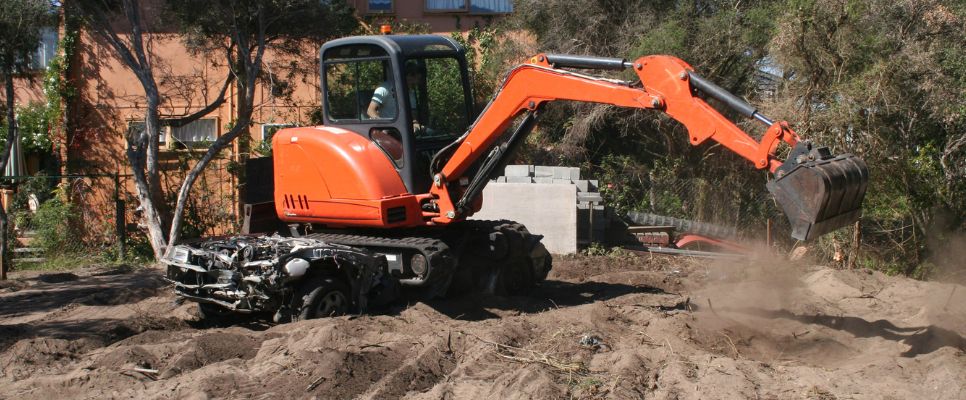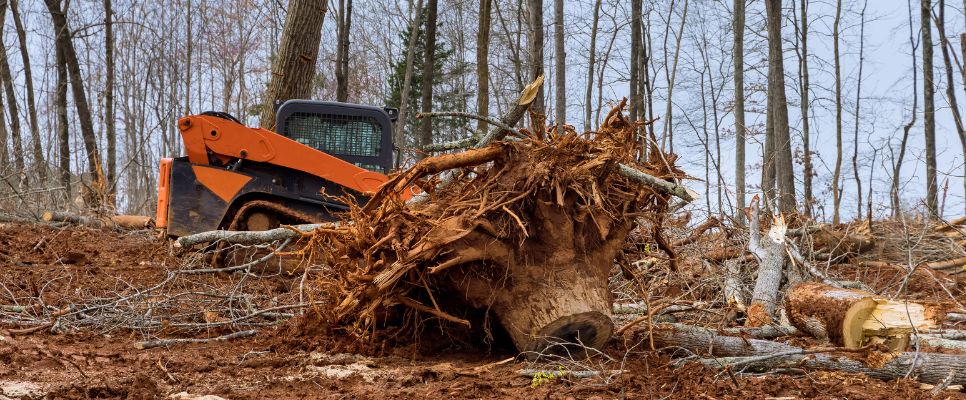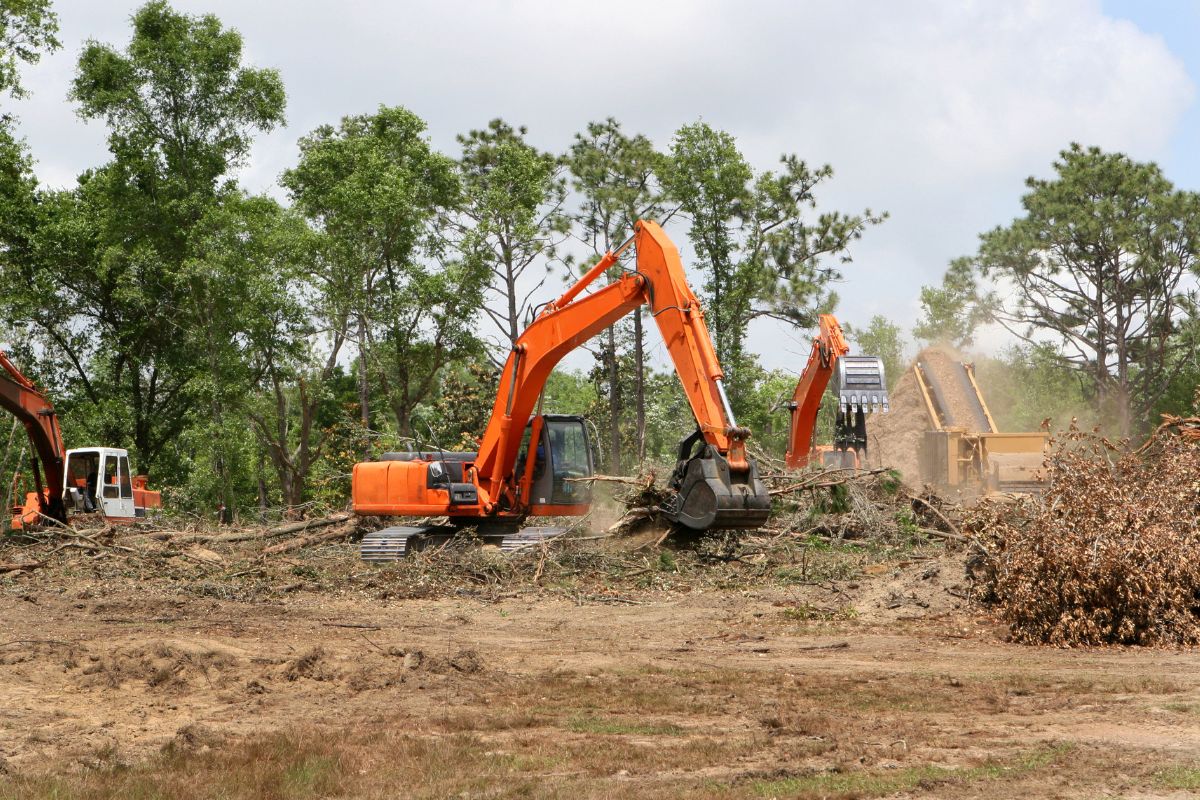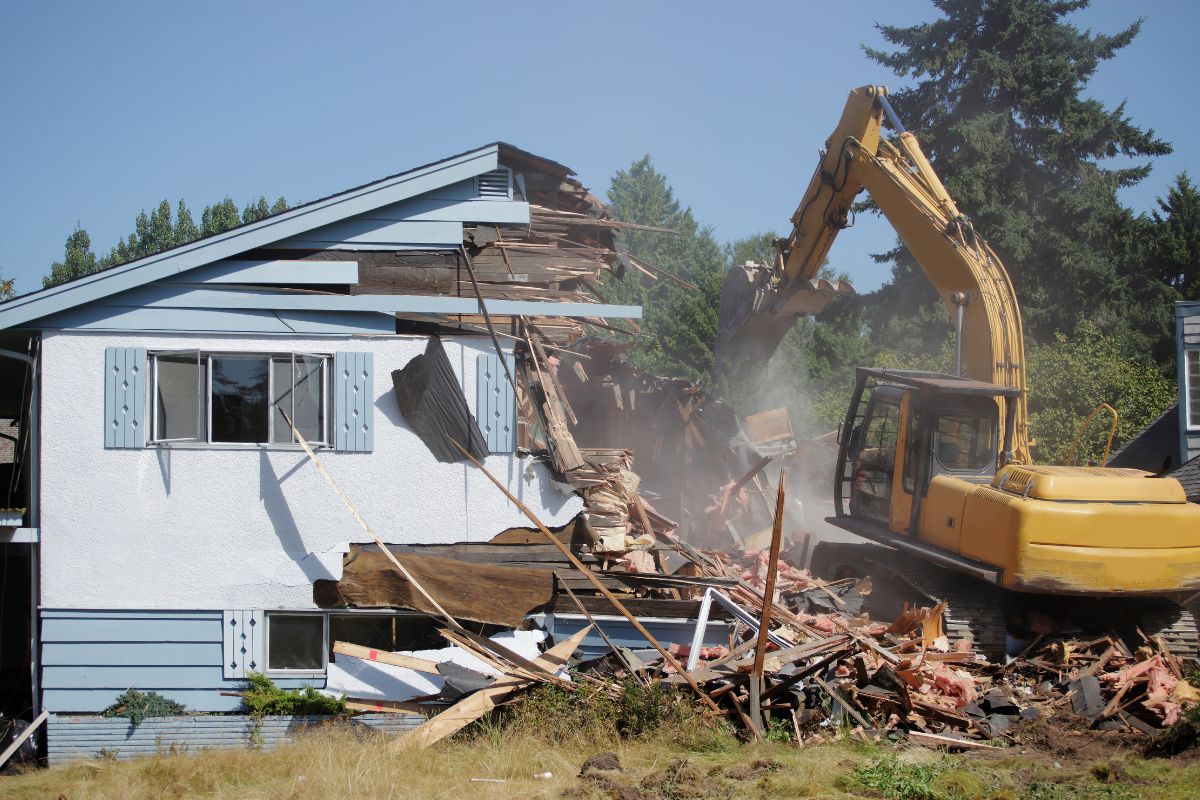Comprehensive Guide to Land Clearing Costs in Australia
Various Australian projects such as construction, agriculture, and land management operations require land clearing as an essential procedure.
Every land-clearing project requires knowledge of its expenses regardless of its purpose, including residential building construction, farming, or environmental rehabilitation.
The costs associated with land clearing represent a substantial financial investment that requires an understanding of corresponding elements along with available methods for execution and steps needed for smooth efficient completion.
This detailed explanation of Australian land clearing costs will guide readers through all essential elements starting from cost-determining factors to various clearing methods and beyond.

How Much Does Land Clearing Cost in Australia Based on Land Size and Condition?
In Australia, land clearing expenses depend mainly on the dimensions of the terrain combined with the current state of the land area. The clearing process demands higher expense for bigger stretches of land and more dense vegetation generally requires additional work and materials. Standard land clearing costs align with two main factors: land dimensions and conditions.
- Small Residential Plots (Under 1 hectare or 2.47 acres):
Small plots of residential land require clearing expenses ranging between $1,500 to $3,000 for each hectare of land. The cost remains between $1,500 to $3,000 per hectare because the land features light vegetation and needs minimal site preparation. The price range for land clearing projects will be lower if the property requires simple access for cutting a small section into the residential house or garden space.
- Medium-Sized Plots (1–5 hectares or 2.47–12.35 acres):
Land clearing expenses become more expensive when dealing with areas covering multiple hectares. The costs for medium-sized plot clearing lie within $3,000 to $10,000 per hectare based on vegetation density, land type and accessibility conditions. The cost of land clearing becomes higher when the site contains big trees together with rocks and steep slopes that create additional difficulties for labour.
- Large Commercial or Agricultural Projects (5+ hectares or 12.35+ acres):
Commercial and agricultural businesses investing in land-clearing projects need to budget $5,000 to $18,000 for each hectare of land they want cleared. The size of the bulk discount relates to the extent of the project because larger land areas qualify for lower per-hectare expenses.
What Does Land Clearing Involve?
To prepare land for either construction or farming projects one needs to take out all trees and natural barriers like vegetation combined with stumps together with rocks along with other earth obstructions. The required steps of land clearing differ based on the current state of the land alongside the results wanted for it. The usual sequence of operations requires the following:
- Vegetation Removal: The initial operation includes removing trees together with shrubs and all types of vegetation from the land. A specific technique will be chosen based on the type of vegetation present so the vegetation can be cut, burned or turned into mulch.
- Stump and Root Removal: Soil clearing assembles all stumps and roots resulting from tree removal that tends to obstruct future land usage. The process requires stump grinders that eliminate stumps alongside excavators for root removal.
- Debris Clearing: Once vegetation removal is completed the project team needs to remove all residual debris through on- or off-site transport or through mulching processes.
- Soil Preparation and Leveling: Soil preparation begins following testing procedures which include necessary preparation for planting agriculture crops. The process involves making a flat usable surface by executing land measurements and leveling operations.
- Erosion Control (Optional): Erosion Control is required for certain terrains like slopes to stop post-clearing soil loss.
Is It Cheaper to Clear Your Land Yourself or Hire a Professional?
Several critical elements emerge when deciding between self-operated land clearing and professional service acquisition.
- Cost Considerations:
Renting machinery for land clearing seems initially affordable to those doing the work on their own because they only need to pay for equipment. Renting bulldozers along with chainsaws and mulchers involves payment between $200 and $1,500 per day for standard equipment prices. Operation costs become high when novices handle equipment since they need to maintain rentals for extended periods.
- Time and Labour:
The process of land clearing by yourself will conserve labour expenses but requires lengthy personal work and demands expertise. The time required for a single project might span from months to weeks for untrained individuals since professionals would need less than two weeks to finish similar jobs.
- Safety and Risks:
Working with land requires somebody to take precautions because performing clearing operations comes with various potential dangers. Running heavy machinery when untrained leads to both accidents and sustained damage to the land besides possible self-harm and equipment destruction.
- Quality and Results:
Hiring professional services enables access to modern equipment and specialized techniques that permit professionals to execute the work with optimum success and minimal mistakes. The work needs to maintain proper execution because incorrect completion generates uneven land surfaces.
The combination of cheaper initial investments with DIY land clearing projects rarely matches the better efficiency together with enhanced security that professionals deliver in their work.
What Factors Affect the Cost of Land Clearing?
The expense of land-clearing operations in Australia depends on various contributing elements. These include:
- Vegetation Type and Density:
Among all cost determinants, the vegetation type alongside its density stands out as the key one. Land clearing operations involving large forests will cost more money than operations in open grasslands or scrublands.
- Land Size and Shape:
Plots of larger dimensions lead to increased costs of total expenses because they demand longer operation times and larger equipment. The time and effort involved in accessing irregularly shaped land plots both increase as well as make the clearing operations more challenging.
- Topography:
The clearing process requires different machinery based on the land slope and elevation and its overall topography conditions. Installing excavators or increasing manual labour will become necessary when performing jobs on steep rocky or uneven surfaces.
- Access to the Site:
The accessibility of land to trucks and large equipment determines the need for additional support and resources required to move equipment entrances and exits. Higher transportation expenses occur when locations are not accessible through basic roads or are situated within distant areas.
- Permits and Environmental Concerns:
Land clearing permits become necessary in specific Australian areas, especially near ecologically vulnerable zones. The entire process of obtaining the necessary permits adds both extra financial expenses together with constraints that affect what clearing methods can be employed.
Land Clearing Cost Per Acre in Australia
Land clearing expense assessment in Australia can be estimated using the cost per acre calculation. The average expense for land clearing operations amounts to $2,000 to $8,000 for each acre. Minimal flat areas with accessible terrain tend to fall at the base of the price spectrum whereas complex tasks involving thick vegetation and tall trees and project areas that demand difficult terrain exist at the top of the price spectrum.
Additional Land Clearing Expenses:
The fundamental expenses of land clearance produce several supplementary costs during the operation:
- Waste Disposal:
Once land clearing finishes the disposal of remaining debris needs transportation of substantial vegetation together with tree trunks and rocks to proper disposal sites. The total expenditure for waste transport and disposal rises from $300 to $1,500 based on the quantity of waste material and its location.
- Stump Removal:
Tree clearing leftovers such as stumps and roots demand additional labour effort because extensive or deep-rooted growth requires specialized removal techniques. The purchase of stump grinders for excavators will increase costs between $500 and $3,000.
- Environmental Mitigation Costs:
Projects located in sensitive areas or protected zones must handle environmental problems through methods like erosion protection or habitat preservation. Project size together with necessary environmental protection requirements affects costs from $1,000 to $5,000.
Costs of Land Clearing for Agricultural vs. Residential Projects
Wide-scale projects coupled with efficient machines lower the expenditure for clearing agricultural land on a per-hectare basis. The work demands elevation in costs per hectare in residential projects because contractors must perform meticulous procedures to achieve precise outcomes.
Different Types of Land Clearing Methods and Their Costs
The price of clearing land varies among the different techniques that organizations use to clear the land. The most common methods include:
- Manual Clearing:
Hand tools operated by workers enable them to use chainsaws and axes when clearing trees along with other vegetation. The technique requires manual labour for smaller sites because it represents the most manual type of clearing. A single hectare of land clearing expense normally varies between $1,500 and $5,000.
- Mechanical Clearing:
Large areas become clear through the application of heavy machinery which includes bulldozers along with excavators and mulchers. The cost of clearing large plots through this method falls between $2,000 and $10,000 for each hectare.
- Mulching:
The procedure of mulching transforms trees along with vegetation into small chips that are left to decompose while resting on the ground surface. No specific environmental harm occurs during this clearing process which makes it a prime option for agriculture developers working with land clearance. Each hectare of land mulched will cost between $3,000 to $7,000.
- Controlled Burning:
Controlled fires serve as an approved method for land-clearing operations in specific regions. The method becomes suitable for dry areas with dense vegetation yet involves extra costs since it demands permits alongside safety measures and environmental compliance procedures.

Understanding the Cost of Land Clearing Machinery Rental
A rental option of machinery designed for clearing land presents a viable substitute for employing a land management contractor's services. Land rental services include multiple expenses that buyers must consider.
- Bulldozers: It can be rented from $400 to $1,000 per day.
- Excavators: Typically rent for $350 to $800 per day.
- Renting Mulchers: It falls within the range of $500 to $1,200 daily.
Before renting land-cleaning machinery calculate all necessary expenses for fuel, transportation and operator fees.
Hidden Costs to Be Aware of When Hiring a Land Clearing Contractor
The hidden expenses that contractors may charge you include the following:
- Remote sites or complex locations may result in additional transport fees that service contractors apply.
- Receive permits before clearance which requires payments of hundreds to thousands of dollars or more for the permitting process.
- The discovery of unpredicted site elements including rocks or dangerous substances might trigger supplementary expenses during the project.
How to Choose the Right Land Clearing Company for Your Needs
The selection process for a land clearing company needs comprehensive research. Your search for a land clearing company should target organizations that show experience along with proper insurance and required licenses in place. To confirm hiring a trustworthy contractor seek multiple quotes from different companies plus request a list of their references.
Conclusion
Making investments in land clearing needs comprehensive preparation followed by financial planning in addition to a detailed examination of important factors. The information about costs coupled with familiarity with different clearing strategies plus awareness of possible concealed charges assists you in making wiser choices for your land clearing initiative.
Before starting the project ensure proper safety protocols apply for work execution and environmental conservation.









